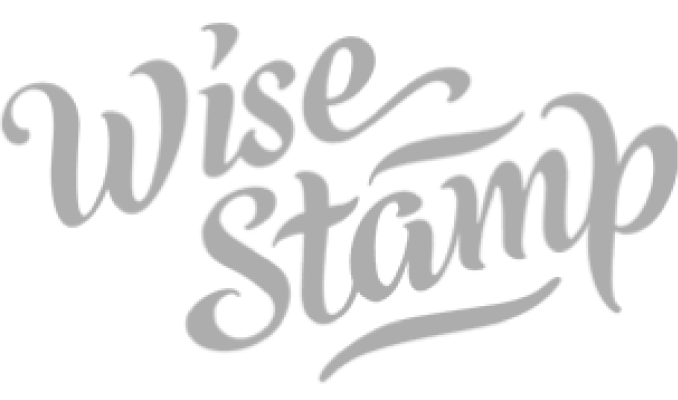Every new entrepreneur wants the best small business strategy.
Every new entrepreneur wants the best small business strategy. That includes marketing. How to create a small business marketing strategy that brings new customers and drives success? This article outlines four proven tactics...
The Small Business Marketing Strategy Playbook For Smart Entrepreneurs
When it comes to marketing a small business, there are many things to consider.
- What is your brand messaging?
- On what online platforms will you have presence?
- How will you track your results?
And so on.
It can be difficult to know where to start and where to turn for help. That's why we've put together this guide. Here is the right way to approach your small business marketing strategy.
Know Your Audience
Understanding your audience is the most important step in developing a successful small business marketing strategy. It is important to identify:
Who you are targeting with your product or service
- Their interests and preferences
- Their demographics
- Their needs
By doing so, you can create customized campaigns that will more effectively reach and engage them.
Market research is key. This includes using tools like maxdiff to gather relevant information regarding the potential customers that suit your product or service. Additionally, consider lifestyle traits such as:
- Hobbies
- Interests
- Other brands they prefer
You may also opt to survey past and current customers to gain insight into what they like about your products or services, how they use them, and any suggested improvements.
Set Clear Goals
Every small business marketing strategy should prioritize goals. This provides a direction and a sense of purpose, enabling marketers to:
- Measure progress
- Track ROI
- Make data-driven decisions
When setting these goals, it's important to start with the intended result in mind — What do you want your marketing efforts to ultimately achieve? For example, do you want to:
- Increase brand awareness?
- Acquire new customers?
- Drive more sales?
Once a main goal is identified, marketers can create smaller milestones to reach that will help measure real-time progress.
Draft Brand-Centric Strategies

The best marketing strategies used by companies experiencing growth begin with developing a strategy to achieve each goal set. This includes deciding on which marketing channels to focus your efforts on, as well as crafting a brand message that will resonate with your target audience.
For example, if you are targeting millennials, then digital marketing channels may be more effective than traditional print advertising methods. Additionally, if you're trying to reach seasoned professionals in a specific industry, LinkedIn may be the best platform.
When it comes to brand messaging, understanding your target markets is key. Language and imagery should speak directly to the interests and needs of your intended customers. In turn, they will engage with your brand.
Market research is of high importance once again — understanding the:
- Trends
- Values
- Lifestyle
Of your target audience will help you craft optimal messaging.
Monitor And Measure
In short, track results and make data-driven decisions. This type of follow-up is the most important component of any successful small business marketing strategy.
As previously mentioned, setting measurable goals gives you a clear direction that helps you track progress towards those goals. Using analytics tools or other reporting methods enables your marketing team to measure ROI for each marketing campaign and adjust strategies in real time based on the data collected.
Final Thoughts On Small Business Marketing Strategy
Creating a successful small business marketing strategy requires a combination of:
- Research
- Goal setting
- Data analysis
By understanding your target audience, setting measurable goals, developing the right strategies and tracking results, marketers can create effective campaigns that reach desired objectives.
6 Replies
-
Master Small Business Marketing Like a Pro Video Editor Imagine crafting a marketing strategy as skillfully as a video editor perfecting a blockbuster film. Every cut, transition, and effect must be precise—just like your marketing efforts. To thrive in today’s fast-paced digital world, you need a systematic, data-driven approach that turns audience insights into high-impact campaigns.
-
Want to quit smoking? Switching to vaping made a huge difference for me. At first, I struggled to find good-quality e-liquids, but once I started to Buy Premium Vape E-Liquid Flavors Online, the experience totally changed. The flavor quality and smoothness helped me stay off cigarettes for good. For anyone thinking about making the switch, here’s the site I used: https://giantnic.com
-
Crafting a successful marketing strategy begins with pinpointing where your target audience is most active. This insightful article suggests a thorough approach – defining your audience, leveraging social media analytics, exploring online communities, and keeping an eye on competitor strategies. InShot’s easy split tool allows you to cut a video into smaller parts with precision, helping you remove unwanted sections or reorganize your scenes smoothly.
-
This guide offers a well-structured framework, highlighting the use of tools like MaxDiff for audience analysis and the importance of setting clear, measurable objectives. It’s a valuable resource for entrepreneurs looking to implement data-driven strategies in today’s ever-evolving digital landscape
-
“This *Small Business Marketing Strategy Playbook* is a game-changer for entrepreneurs! It breaks down effective, practical strategies that are easy to implement and perfect for scaling up on a budget. A smart guide for anyone ready to make a real impact with their marketing efforts!”
-
“The Small Business Marketing Strategy Playbook for Smart Entrepreneurs is a must-read! It’s packed with actionable insights tailored for small business owners who want to grow strategically without a massive budget. Perfect for anyone looking to boost their brand and reach their ideal audience efficiently!”
-
A solid marketing strategy is key to the success of any small business. To get started, focus on knowing your audience. Identify who your target customers are, their needs, and preferences. This allows you to tailor your marketing efforts more effectively. Use tools like MaxDiff for market research and survey existing customers to gain valuable insights. From there, you can create personalized campaigns that truly engage your audience. Tracking results and refining your strategy over time will also ensure long-term success.
-
Applying a systematic approach to small business marketing mirrors the intricacies of video editing. This piece provides a structured framework, emphasizing the utilization of tools like maxdiff for audience analysis and the establishment of clear, measurable objectives. A precise guide for entrepreneurs seeking data-driven strategies in a dynamic digital ecosystem.
-
Crafting a successful marketing strategy begins with pinpointing where your target audience is most active. This insightful article suggests a thorough approach – defining your audience, leveraging social media analytics, exploring online communities, and keeping an eye on competitor strategies. Considering the prevalence of visual content, integrating platforms like Instagram could be a game-changer for engaging your audience.
-
Creating an effective marketing strategy starts with identifying where your target audience is most active. This insightful article recommends a comprehensive approach: defining your audience, utilizing social media analytics, exploring online communities, and monitoring competitor strategies. Given the prominence of visual content, incorporating platforms like Instagram can significantly enhance audience engagement.
-
Leave a Reply

Like what you see? We've been told our blog posts are like potato chips: You can't read just one...
Subscribe to receive them fresh in your Inbox, and you can grab our best insights about social media marketing before everyone else sees it!

Relevant Resources
view allThe True Cost Of Letting Peak Sales Periods Pass You By

Three Surprising Signs You’re Still Silencing Your Female Employees

How Ongoing Training In The Workplace Can Drive Long-Term Business Growth






































By VN Video Editor on